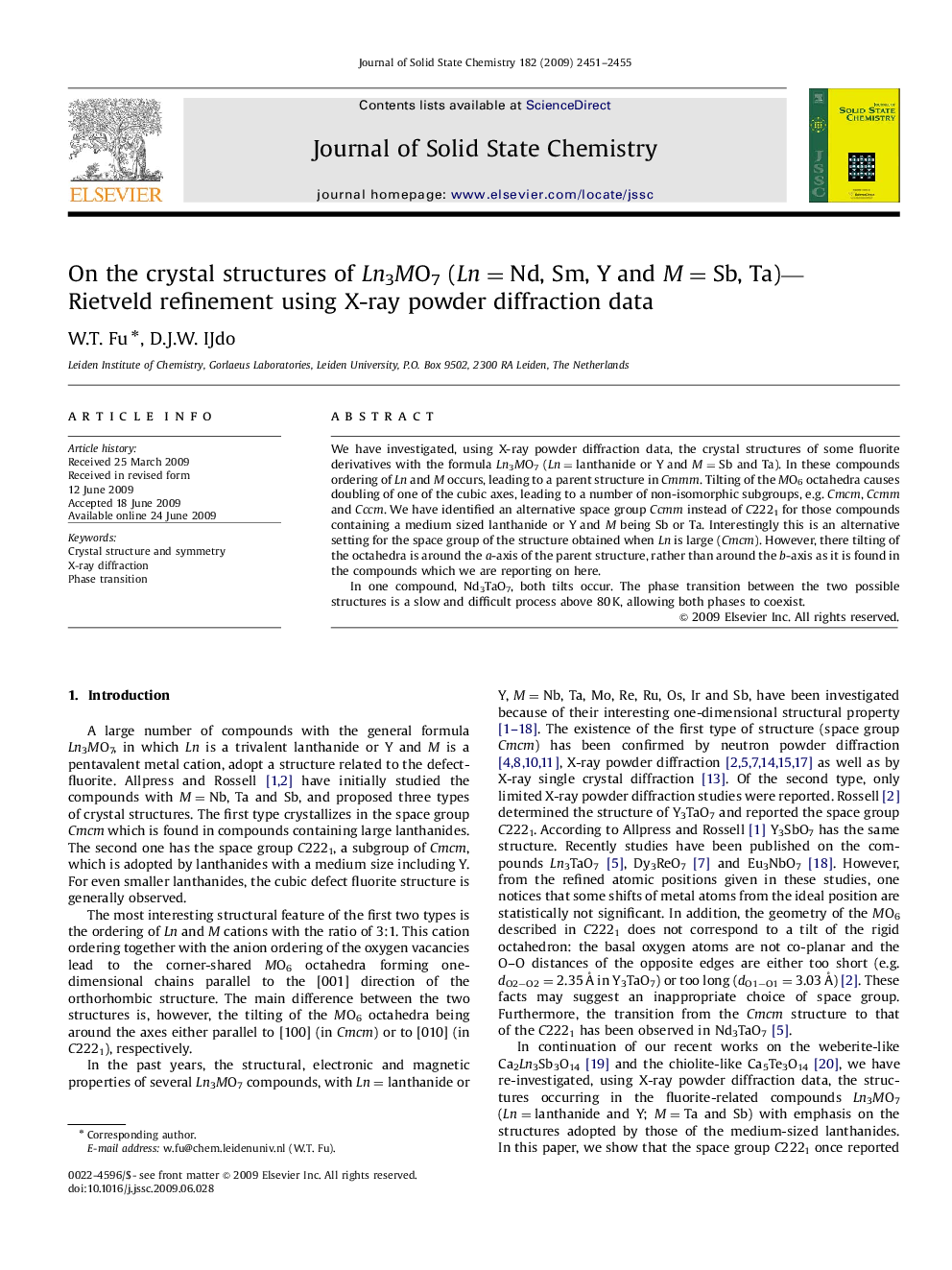| Article ID | Journal | Published Year | Pages | File Type |
|---|---|---|---|---|
| 1331536 | Journal of Solid State Chemistry | 2009 | 5 Pages |
We have investigated, using X-ray powder diffraction data, the crystal structures of some fluorite derivatives with the formula Ln3MO7 (Ln=lanthanide or Y and M=Sb and Ta). In these compounds ordering of Ln and M occurs, leading to a parent structure in Cmmm. Tilting of the MO6 octahedra causes doubling of one of the cubic axes, leading to a number of non-isomorphic subgroups, e.g. Cmcm, Ccmm and Cccm. We have identified an alternative space group Ccmm instead of C2221 for those compounds containing a medium sized lanthanide or Y and M being Sb or Ta. Interestingly this is an alternative setting for the space group of the structure obtained when Ln is large (Cmcm). However, there tilting of the octahedra is around the a-axis of the parent structure, rather than around the b-axis as it is found in the compounds which we are reporting on here.In one compound, Nd3TaO7, both tilts occur. The phase transition between the two possible structures is a slow and difficult process above 80 K, allowing both phases to coexist.
Graphical abstract(a) A projected view of Ln3MO7 along the a-axis showing the ordering of Ln and M cations in the fluoride lattice. Note that the unit cells of the fluorite (dashed line), the parent Cmmm (dashed line) and the Cmcm/Ccmm structures (continuous line) are indicated. (b) Schematic representations of the crystal structures of Y3SbO7 showing SbO6 octahedra and Y. Oxygens that do not bond to M cations are also shown.Figure optionsDownload full-size imageDownload as PowerPoint slide
